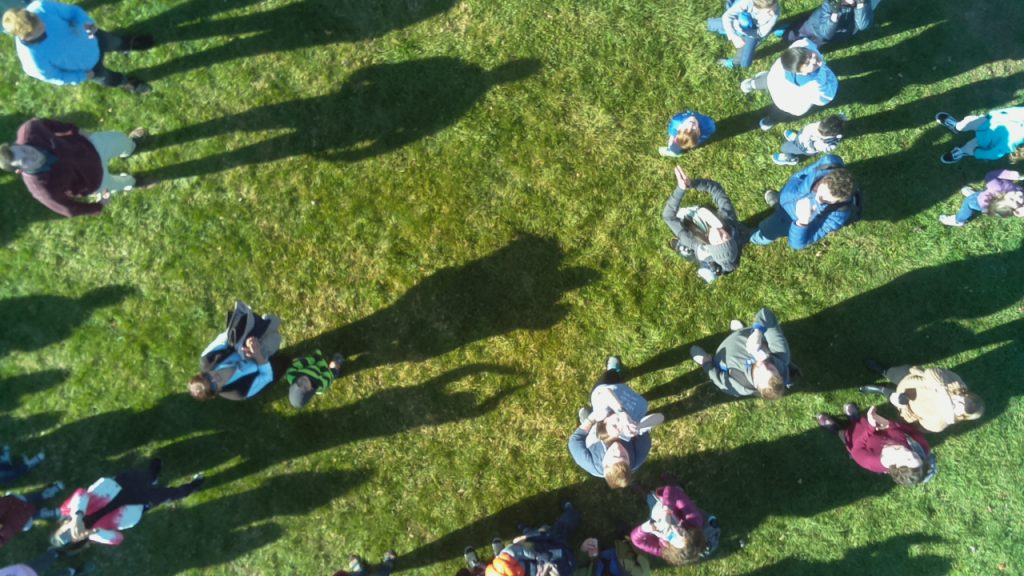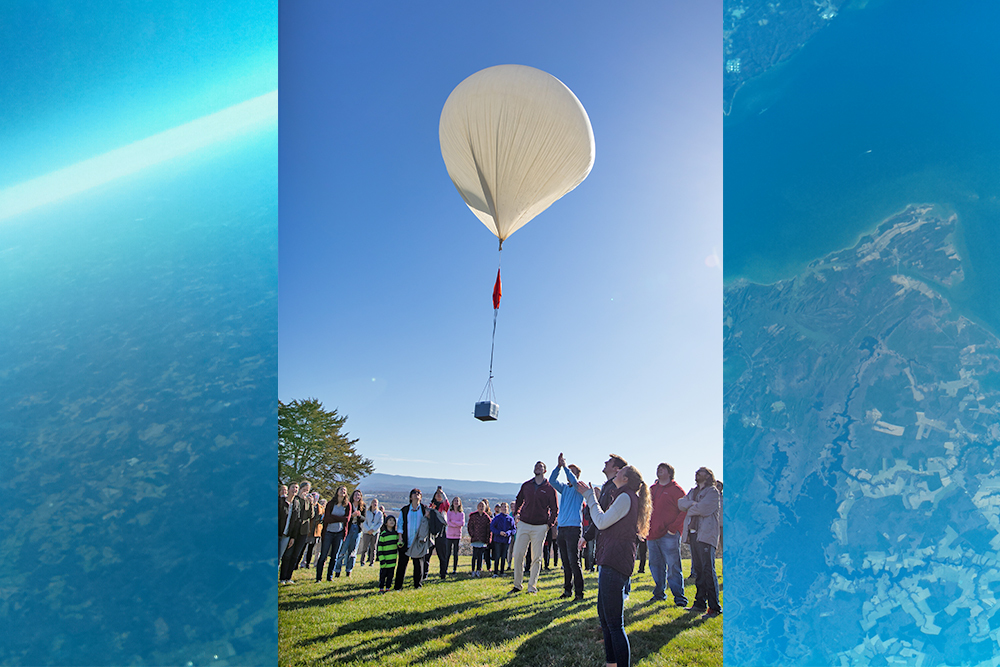When the Engineering Design III class at Eastern Mennonite University released a weather balloon into the sky one late November morning, it wasn’t without some trepidation and many questions.
Would it fly? Where would it go? Would the data collection devices work and the transponders transmit? How would they find it?
Despite the uncertainty, the class emailed invitations to the community and shared about the project on WSVA News Radio. And on Launch Day, with about 100 onlookers watching, they breathed a collective sigh of relief as the helium-filled balloon ascended into the sky and drifted away.

The balloon carried a styrofoam box packed with equipment to take atmospheric measurements, including an ozone meter and thermometer, as well as a camera and multiple transponders. The students lost track of the balloon for a period of time because of freezing temperatures at altitude, but communication resumed later in time to find out where it landed.
For more information, including equipment details, see coverage by The Citizen.
It wasn’t quite where they thought it would be. The students had plugged NOAA data into a simulation that predicted the balloon would travel northwest and land near Parkersburg, West Virginia. Instead, it travelled approximately 165 miles to Vienna, Maryland, dropping into an Eastern Shore cornfield where it was recovered by the local police department.
“We think we may have missed a negative somewhere in the simulation, because it ended up being almost exactly opposite to where it was expected to land,” said Karissa Sauder, who along with classmate Douglas Nester acted as spokespersons for the project.
Their colleagues on the project included Aaron Zimmerman, Ethan Beiler, Blake Sargent, Josh Schlabach and Professor Stefano Colafranceschi.

